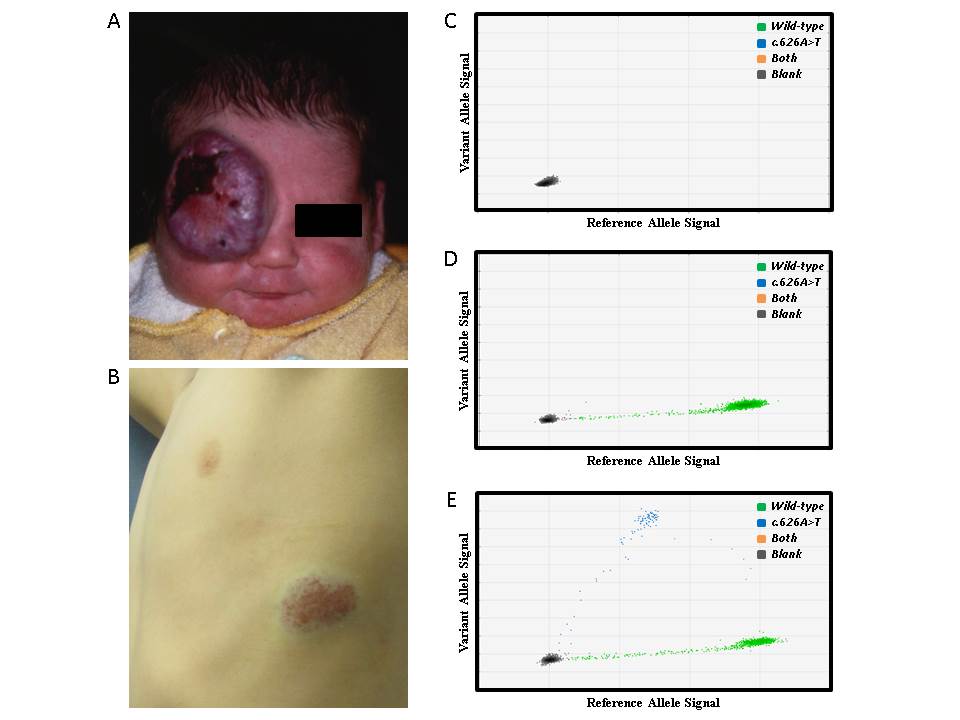|
|
|
|
|
Back to 2016 Annual Meeting
Somatic Activating Mutations in GNAQ and GNA11 are Associated with Congenital Hemangioma
Javier A. Couto, BS, Ugur M. Ayturk, PhD, Steven Hann, PhD, John B. Mulliken, MD, Kaitlin L. Williams, August Yue Huang, PhD, Steven J. Fishman, MD, Theonia K. Boyd, MD, Harry PW Kozakewich, MD, Joyce Bischoff, PhD, Arin K. Greene, MD, MMSc, Matthew L. Warman, MD.
Boston Children's Hospital, Boston, MA, USA.
BACKGROUND: Congenital hemangioma (CH) is a rare vascular tumor that is fully grown at birth. CH displays two clinical patterns postnatally: rapidly involuting congenital hemangioma (RICH) and non-involuting congenital hemangioma (NICH). The purpose of this study was to test the hypothesis that CH is caused by a somatic mutation.
METHODS: Whole transcriptome sequencing (RNA-seq) was performed on fresh-frozen CH from 8 individuals. Single-nucleotide variants were identified and compared to those found in the general population and patients with other types of vascular lesions. Variants unique to the CH samples were further evaluated by droplet digital PCR (ddPCR) and multiplex inversion probe sequencing (MIP-seq). Additionally, 8 formalin-fixed paraffin-embedded (FFPE) cutaneous (n=7) and hepatic (n=1) CHs were evaluated with ddPCR and MIP-seq.
RESULTS: All 8 CH lesions were found by RNA-seq to have mosaic missense mutations that alter glutamine at amino acid 209 (Glu209) in GNAQ (n=6) or GNA11 (n=2). The variant allele frequency (VAF) ranged from 3% to 33% at the mRNA level. We verified the presence of the GNAQ and GNA11 variants with ddPCR and MIP-seq. Four of the 8 FFPE CH samples were found to have GNAQ (n=3) or GNA11 (n=1) p.209 mutations with a VAF between 1% and 10% at the DNA level (Figure 1).
CONCLUSIONS: Our data indicate that somatic mutations that alter Glu209 in GNAQ and GNA11 are associated with CH. Somatic mutations in GNAQ and GNA11 have also been found in capillary malformation and uveal melanoma, respectively. It remains to be understood how mutations in the same genes can be associated with different conditions.
FIGURE 1. (A) One-week-old male with an ulcerated supraorbital RICH. (B) 8-year-old male with a NICH on the trunk. (C) ddPCR graph of water-negative control for the GNA11 gene, showing no fluorescence for wild-type or variant (c.626A>T) alleles. (D) DNA from unaffected control tissue indicating the presence of only wild-type alleles. (E) DNA from a congenital hemangioma demonstrating the presence of wild-type and variant (~8%) alleles.

Back to 2016 Annual Meeting
|
|
